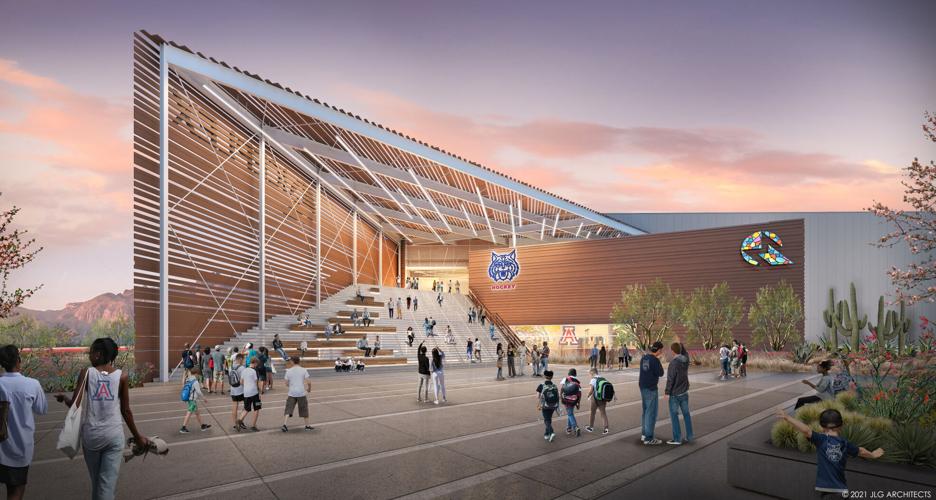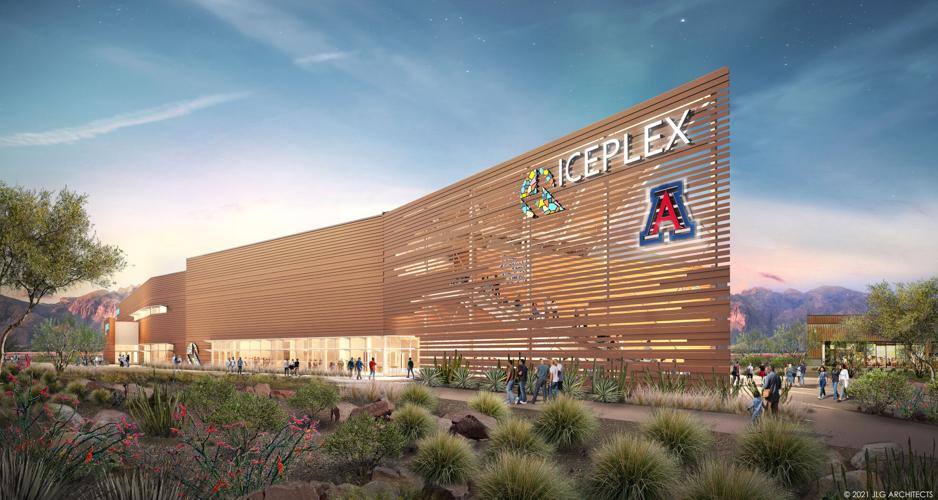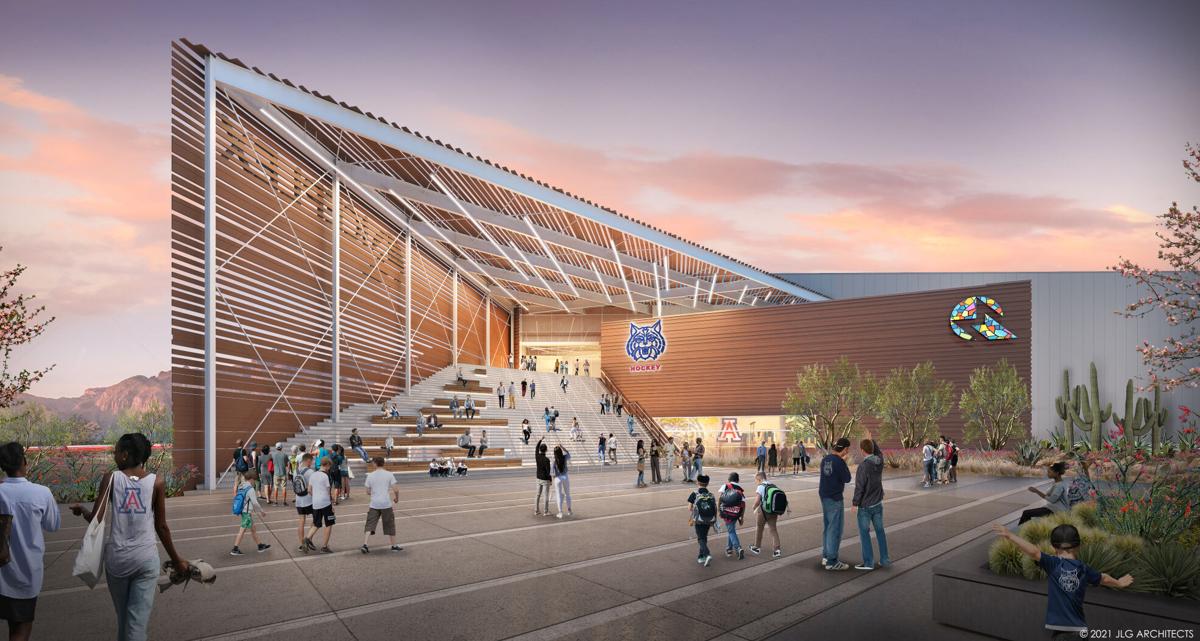The new Mosaic Quarter Iceplex will be home of the UA club hockey team starting in 2024.
The Wildcats won’t be alone. The UA announced last week that it will add three new teams when the 3,000-seat Iceplex opens: An ACHA Division II men’s hockey team that will feed the Division I squad, an ACHA Division I women’s hockey team, and an adaptive sled hockey team.
The Iceplex, located near South Kino Parkway and Interstate 10, will serve as the teams’ headquarters and practice facility.
For years, UA director of campus recreation Troy Vaughn and UA hockey coach Chad Berman discussed expanding beyond one team. But Tucson has just one sheet of ice, at Tucson Arena; it was hard enough to book consistent practice times with just one team.
The Mosaic Quarter Iceplex will have three sheets of ice, enough for all four teams to train and for the facility to host tournaments. The UA will also offer ice-skating lessons to students and members of the Tucson community. The ice will require 270,000 gallons of water per year. Iceplex developer Frank Knott said the facility will use systems designed to utilize storm water and reclaimed water, allowing it to be 100% aquifer independent.
“It wasn’t until we brought on this new building and that we knew that the new building was coming in the future that we were able to go down this avenue to make it happen,” Vaughn said.
The Division II men’s team will serve as a farm team for the Division I team. It will allow 30 more interested athletes to play hockey at the collegiate level, and call-ups will be available when a player suffers an injury.
Adding sled and women’s hockey teams was a no-brainer, Vaughn, Berman and others said.
“What better inclusivity can be brought to not only just Campus Recreation but Arizona hockey in general than a sled hockey team?” Vaughn said. “If we have the facility to do this, and we have the wherewithal to make this happen, we need to also press for women’s involvement in ice hockey.”

The new Mosaic Center Iceplex will be located near South Kino Parkway and Interstate 10.
Sled hockey allows those who cannot skate conventionally because of a disability to play the game they love. Players use a specially designed sled with two hockey skate blades to get around the ice. Two sticks featuring metal picks on the butt end allow players to maneuver on the ice.
The UA already boasts one of the largest and most successful adaptive athletics programs in the country. The sled hockey team will only add to it.
The Wildcats’ women’s team will join similar squads at Arizona State and Grand Canyon.
“We want to help grow the women’s side too, and that was just a no-brainer opportunity just to go hand in hand,” Berman said. “There’s been a ceiling to this (Division I men’s) program, and that’s been true on and off the ice. So with the reality of we’re going to have three sheets, it was like, OK, now we can start talking about these things we’d always wanted to do but we just didn’t have the resources to do it. It’s our way of doing our part to help grow the game.”
Gone are the days when the future of UA hockey seemed bleak. And the lack of available ice time in Tucson will soon be a problem of the past. The completion of the Mosaic Quarter Iceplex means there will be 17,500 hours of ice time per year at its disposal. There is also room within the construction plans for a fourth sheet of ice in the future.
The added ice time should benefit both the Wildcats and a Tucson youth hockey scene that has grown by 350% over five years.
When Knott — a Baltimore native who lives in Washington D.C. — first came to Tucson, he was struck by the rapidly growing youth hockey community and surprised there was no dedicated hockey facility for children.
“For me, as a hockey parent, I think of how easy it is for me in my hometown, to go to the rink for my son or to travel, but to think of all the parents that have struggled with time, and resources, and challenging schedules between different kids as to how to make it work between here and Phoenix,” he said.
Berman’s son also plays hockey; the UA coach has spoken with many families who have relocated to Phoenix to support their children’s dreams. Others drive back and forth from the valley as many as four times per week.
“I think that’s what makes me so proud to be a part of this group with Frank and Troy. These are people who get it that want to do more want to give back,” Berman said.
Of course, Berman notes, there is a lot of work to be done before 2024. But the questions about hockey’s future in Tucson have finally been silenced.
“The blank canvas I saw was a matter of if I can get a program that was committed to winning to putting in the work; that cared about the community; that wanted to be a part of something bigger than themselves; ‘imagine what we can do here,’” he said. “And now we’re seeing the fruits of that labor.”






